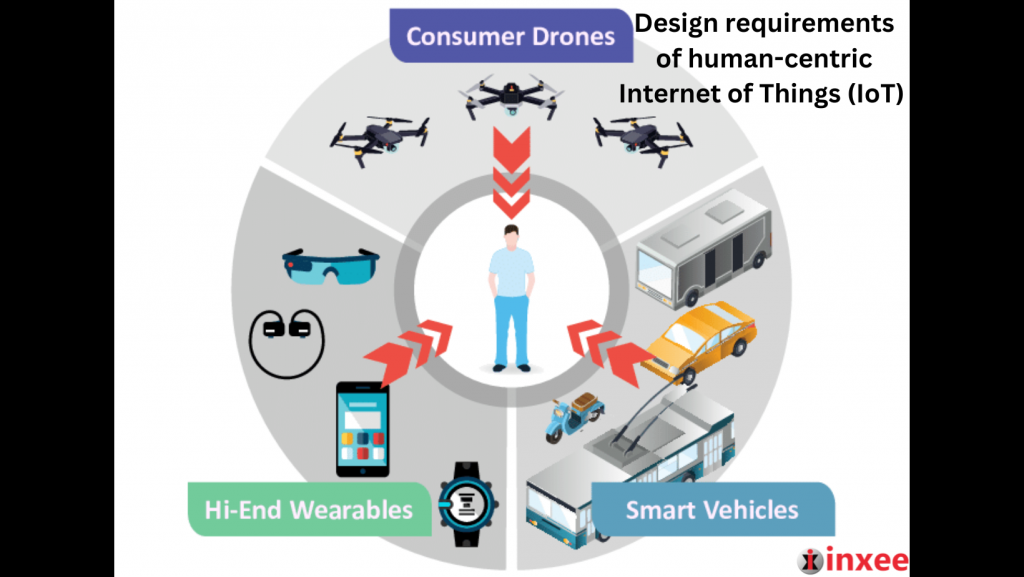July 4, 2023
Artificial Intelligence (AI), embedded systems, Fifth Industrial Revolution, Five layer architecture, Home Automation, Industry 5.0, internet of medical things, Internet of Things, iomt, IoT, IoT Devices, Software, Wearables, Wireless
No comments
Design Requirements of Human-Centric Internet of Things (IoT)
Designing a human-centric Internet of Things (IoT) involves considering the needs, preferences, and well-being of individuals who interact with IoT devices and systems. The design requirements for a human-centric IoT can be summarized as follows:
- User-Centric Approach: The IoT systems should be designed with a user-centric approach, focusing on enhancing user experiences and addressing their needs. This involves understanding user requirements, preferences, and behaviors to create intuitive interfaces and seamless interactions with IoT devices.
- Privacy and Security: Privacy and security are crucial considerations in IoT design. Systems should incorporate robust security measures to protect personal data and ensure user privacy. Data encryption, secure communication protocols, and user consent mechanisms should be implemented to safeguard sensitive information.
- Accessibility and Inclusivity: IoT devices and interfaces should be accessible to a wide range of users, including those with disabilities. Design considerations should include features like voice commands, gesture-based controls, and compatibility with assistive technologies, ensuring inclusivity and usability for all users.
- Transparency and Trust: IoT systems should provide transparency in data collection, usage, and processing. Users should have clear visibility into how their data is being utilized, and they should have control over their data. Building trust with users through transparent practices helps foster long-term adoption and acceptance of IoT technologies.
- Ethical Considerations: Designers should consider ethical implications when developing IoT solutions. This includes addressing issues like data ownership, algorithmic bias, and unintended consequences of IoT deployments. A responsible and ethical approach ensures that IoT technologies benefit society as a whole.
- Energy Efficiency: IoT devices should be designed with energy efficiency in mind to reduce environmental impact and enhance sustainability. Power-saving features, optimized network protocols, and intelligent energy management techniques should be incorporated to minimize energy consumption.
By incorporating these design requirements, a human-centric IoT ecosystem can be created, promoting user satisfaction, privacy, inclusivity, trust, ethics, and environmental sustainability. Such an approach ensures that IoT technologies truly serve the needs of individuals and enhance their quality of life.










Leave a Reply